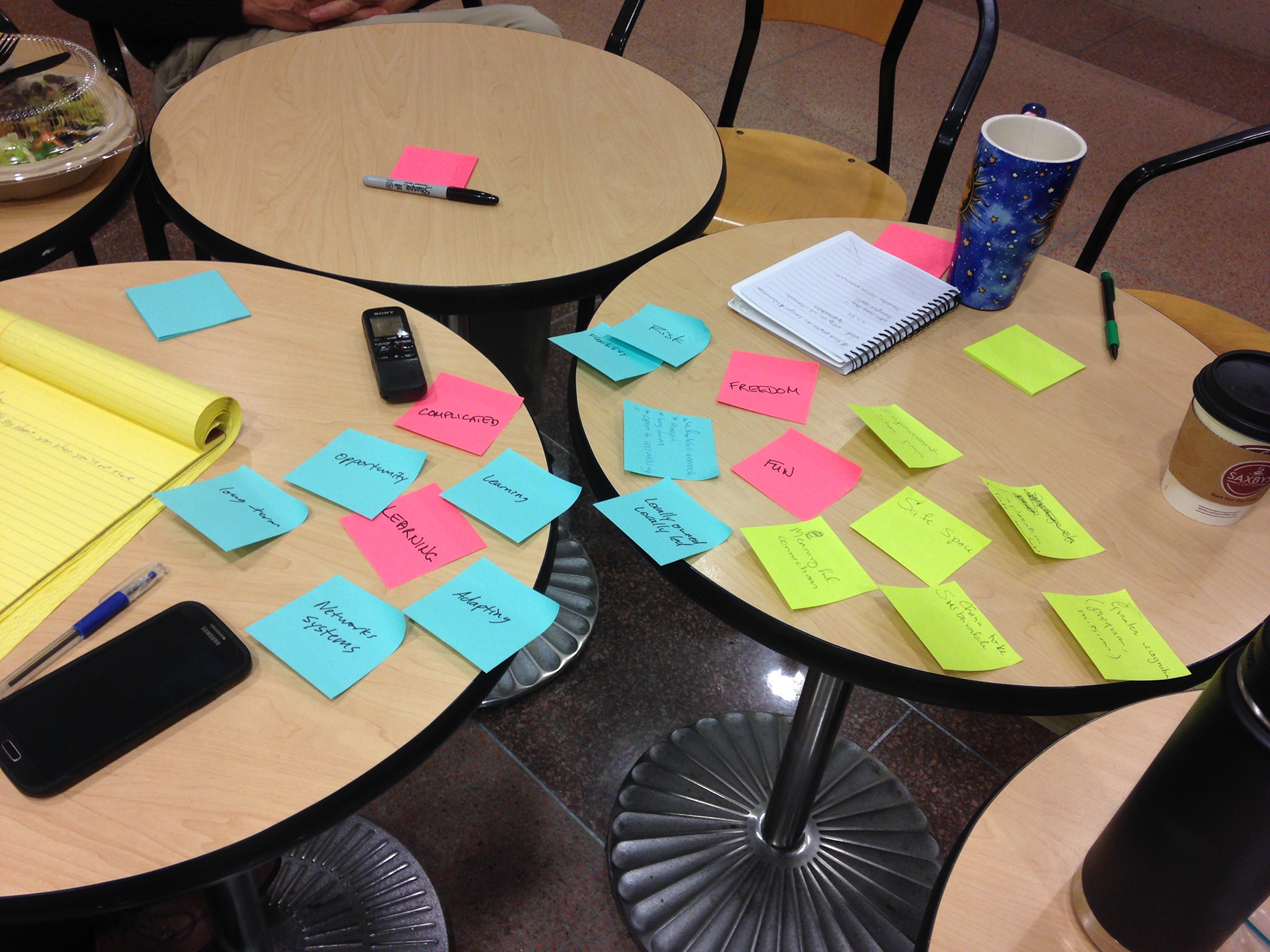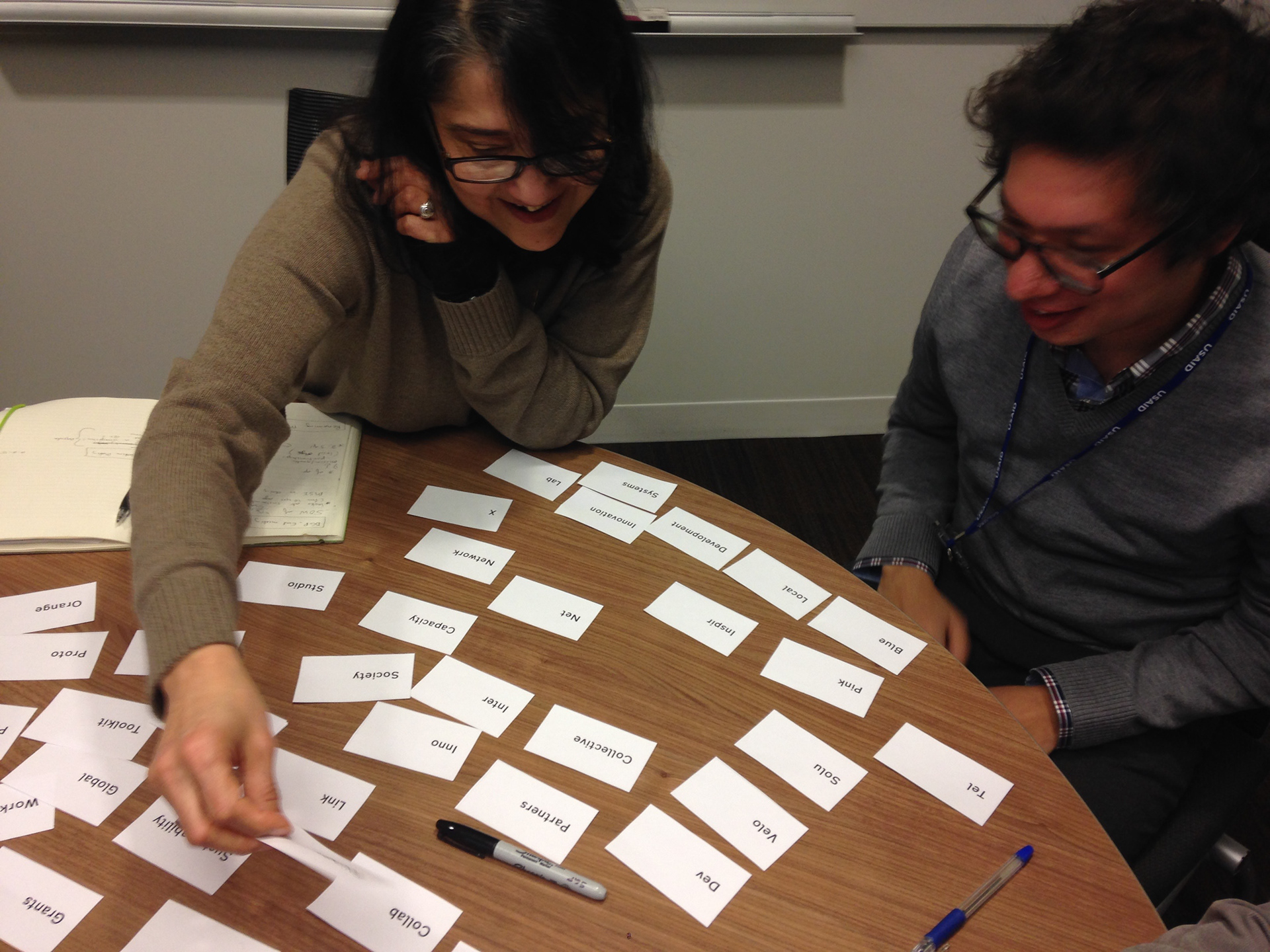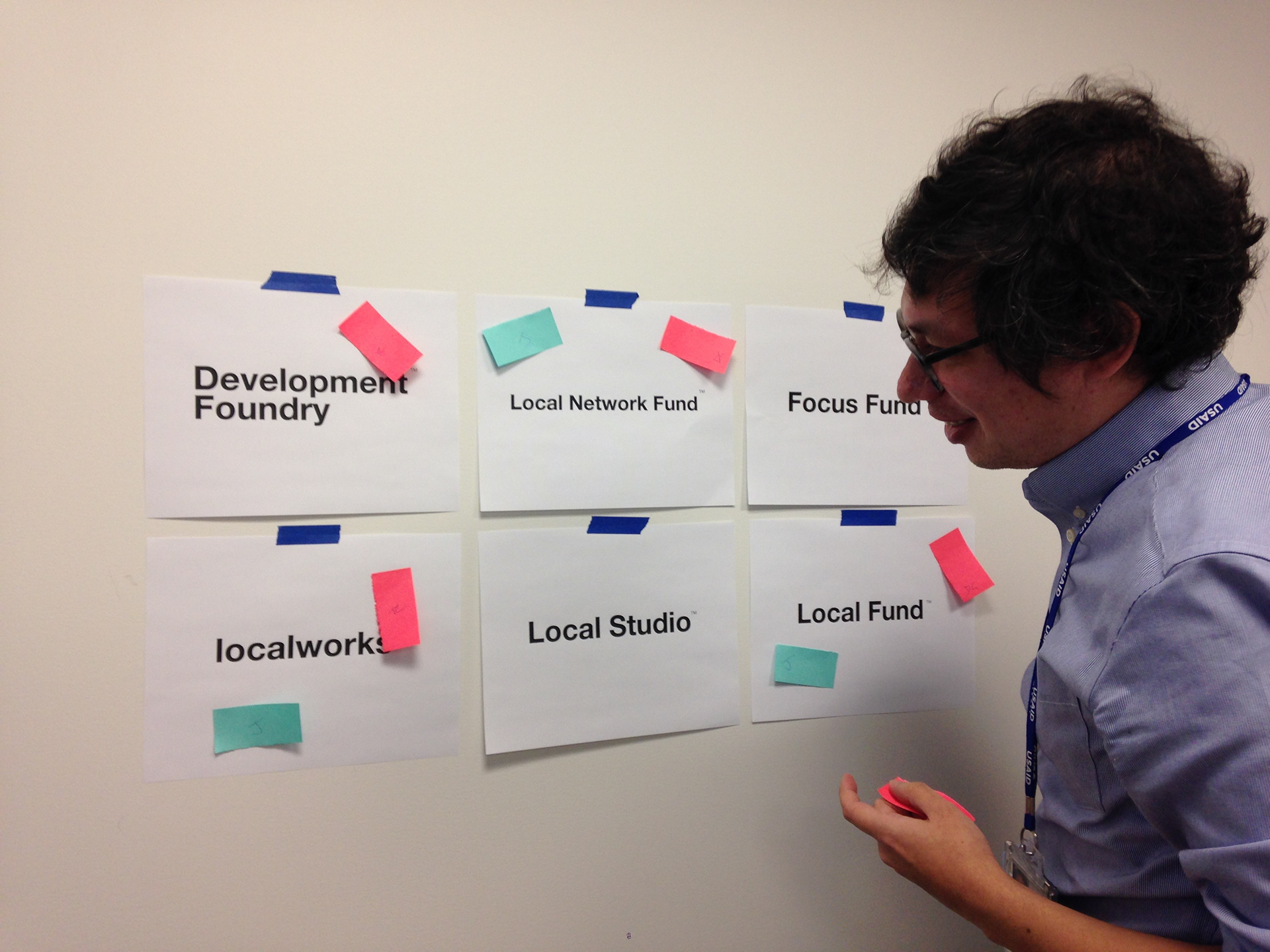The Need
The time I joined USAID to work on localworks was when many things were still not in place—there wasn’t a common understanding of what localworks was, how to achieve the goals of locally owned and led development, what our values and principles were, how to talk about the program with others, what our voice was, who our audience was, etc. It was very much a startup-like environment where we had to build a brand from the bottom-up. I got excited about this, because I loved building brands.
The Challenge
No Branding Allowed
The difference between building a brand within a federal agency versus building a brand for a start-up (like I did in 2014), was that no individual programs within USAID were allowed to be branded. This was a shock to me at first, but it made sense. If the hundreds of programs at USAID developed their own brands, it would be a colorful mess of disparate brands running wild. However, I still believed that branding—beyond logos and visual guidelines—was important to development programming. As our primary audience was the constituents of development—the people in developing countries that we serve—it was important how we came across. If our program was about enabling local actors to drive their own development, it was essential that we were building an approachable, user-friendly, and accessible brand identity and communicating values that spoke to our original mission.
The difference between building a brand within a federal agency versus building a brand for a start-up (like I did in 2014), was that no individual programs within USAID were allowed to be branded. This was a shock to me at first, but it made sense. If the hundreds of programs at USAID developed their own brands, it would be a colorful mess of disparate brands running wild. However, I still believed that branding—beyond logos and visual guidelines—was important to development programming. As our primary audience was the constituents of development—the people in developing countries that we serve—it was important how we came across. If our program was about enabling local actors to drive their own development, it was essential that we were building an approachable, user-friendly, and accessible brand identity and communicating values that spoke to our original mission.
Naming
To adhere to the branding standard of USAID, the challenge for me was to build a brand without “branding”. One of the ways to do this was through naming.
To adhere to the branding standard of USAID, the challenge for me was to build a brand without “branding”. One of the ways to do this was through naming.
Believe it or not, localworks was originally called the "Small Grants Program (SGP)". It's the official name that is written in legislation. However, nobody was really a fan of this name because it was as generic as government brand cheese. In fact, our office already had a program under the same name, which actually issued small grants of $2000. Our program was about issuing grants of up to $2 million. Additionally, as an agency, we had an issue with acronyms. There were simply too many acronyms that even internal staff had a difficult time remembering. And the issue with acronyms was that it only contributed to the prevalence of jargon in our communication, and created more distance between us as a development agency and the people that we serve.
The Process
Understanding the Program
Before jumping into coming up with names, it was important to have a discussion on the overall vision, purpose, and brand of the program. How is this different than past development programs? What should our language and overall tone be? What kind of relationship do we envision with missions and local development actors? How do we want people to feel when they hear about us and work with us?
Before jumping into coming up with names, it was important to have a discussion on the overall vision, purpose, and brand of the program. How is this different than past development programs? What should our language and overall tone be? What kind of relationship do we envision with missions and local development actors? How do we want people to feel when they hear about us and work with us?
In order to get the whole team’s thoughts in one place, I ran a preliminary “naming” workshop where we sat down in a casual setting to freely express our thoughts on what the program should be. Using Post-its and Sharpies, I asked each team member to write key words that they wanted associated with the program. We used those as starting points of a conversation that covered the context of a daring program like the SGP, the existing issues in development that we wanted to address through the program, etc. The top five key words that summarized our thoughts were: flexibility, responsive, learning, and shared power. These words were brought up in later workshops to make sure we stayed focus on our main message.


Understanding the Context
In addition to getting a sense of how the team envisioned the program, we had to understand the context in which the name would be used. What’s already out there? Who’s using these names? It was easy to see that there was an overuse of names with the words “global” or “lab” or “development" in it.
In addition to getting a sense of how the team envisioned the program, we had to understand the context in which the name would be used. What’s already out there? Who’s using these names? It was easy to see that there was an overuse of names with the words “global” or “lab” or “development" in it.
Lots of global, lab, development, and innovation.
It was also apparent that USAID had a tendency to make everything into an acronym. In any given document published by USAID, you were bound to see an acronyms section running at least two pages:
It was my personal mission to make our new name non-acronym-izable by design.
A naming workshop was held after our preliminary discussion, where I utilized card sorting activities to help the team brainstorm combination of words. The hands-on approach helped us get creative. I made sure that all ideas, whether good, bad, or terrible, were all expressed without fear of judgment. From this workshop, we were able to come up with a handful of concepts and ideas we wanted to explore further. It was important to make sure we weren’t arriving at exact names just yet.

In the second and final naming workshop, I prepared six candidates of names that I synthesized based on the concepts and ideas discussed in the previous workshop. The following naming principles were applied, based on the context of government naming habits: 1) One-word names are good (because people are less prone to make one-word names into acronyms; 2) Fewer syllables the better (because people are less prone to shorten names themselves); and 3) Don’t be generic (i.e. “Small Grants Program”)


Through a down-voting process, we narrowed the six options down to four, two, and finally the last standing one: localworks. The name captured the Small Grant Program’s goals very well, as it emphasized the local ownership of the development “works” and made a concurrent statement of how the “local” approach “works."
But I couldn’t just stop there—I had to ensure that people would use it right. So I issued some guidelines on how to use this term properly, so as to avoid another "Death by Acronym".
We would never refer to it as “The Local Works Program” because without a doubt, people would start referring to it as the TLP or something along those lines. I made sure everyone said localworks. Not "The localworks" or "The localworks Program". Basically we had a "Facebook" vs "The Facebook" moment.
I also got rid of the space between "local" and "works" and merged it into one word. It was an intentional design choice that was made in hopes of deterring people from making it into an acronym, such as “LW.”
I also got rid of the capitalization of the “L”. Typographically, the gaping negative space between the capital “L” and lowercase “o” was not pleasant. We decided on the lowercase “l” because we also thought it would make the program more approachable. Our agency’s "USAID" logotype was already in extra bold capital letters, speaking to the strong image of the U.S. as a global hegemony, so going all lowercase with our program’s name was an intentional design decision.
A Success Story
Here is what happened with “localworks” in action. Our office was preparing some briefers for the executive leadership, summarizing what each of our seven programs did and what we achieved. While reading through the briefer I saw a beautiful thing as I read through each program name:
localworks was the only program that didn’t require a parentheses for an acronym. Other might not have noticed this, but I did, and it was a big deal for me.
Sometimes in government, it’s all about the small victories.